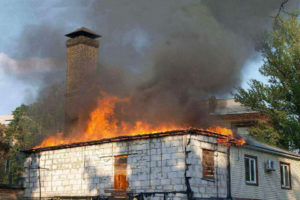If you own a fireplace, you may need a chimney company to remove creosote from your flue at times. Do you know what creosote is? Creosote is a substance that forms inside your chimney with each use of your fireplace, and you must maintain and clean out your system regularly to remain safe. Failure to address the creosote accumulation in your system can result in damages and chimney fires. A thorough chimney sweeping is smart way to ensure your chimney system is safe and efficient. The experts at CinderBox Chimney Services is here to help.
What Types of Creosote are There?
 There are a few different types of creosote that could resides in your chimney. The first type is ash-like and flaky, and the second type is similar to tar and is sticky. The third type is hard and glossy. All three of these types of creosote are highly flammable, and they need to be removed on a regular basis.
There are a few different types of creosote that could resides in your chimney. The first type is ash-like and flaky, and the second type is similar to tar and is sticky. The third type is hard and glossy. All three of these types of creosote are highly flammable, and they need to be removed on a regular basis.
The hard, glossy creosote, also known as glazed creosote, is the hardest to remove. As it needs to be broken down with chemicals and special tools before a professional is able to remove it. If you have found glazed creosote in your chimney, don’t leave the job to a company that cuts corners or isn’t trained. Missing even a small amount could put your home at risk, so trust in our sweeps to tackle it all. We’ll have your system looking and working great in no time!
What Causes Buildup to Occur?
So, what encourages creosote to form? Well, what you burn makes a big difference. Throwing trash, old boxes, wet wood, or anything other than properly seasoned logs into your fires will result in higher amounts of creosote in your flue and chimney. The best firewood you can use need to be properly dried out for at least six months to minimize its moisture content. It should be lightweight, darker in color, and make a hollow/clunking noise when you hit them together.
Poor airflow also cause more creosote to form inside your chimney. Make sure there are no clogs inside your chimney messing up the draft flow, and regularly check that your damper is open. If you’re experiencing issues with your damper, call us today. We’ll be happy to take a look, repair or replace it.
How Can I Resolve Issues with Creosote?
Like we said, be care what you burn and improve your airflow are two big steps towards minimizing creosote accumulation inside your system. It is also vital to invest in annual inspections for your system, so that CSIA certified experts can get a thorough look at your system. Call your sweeps today and set up an appointment is an easy and quick way to ensure your system is working efficiently and safely. Give our team a call today!

Recent Comments